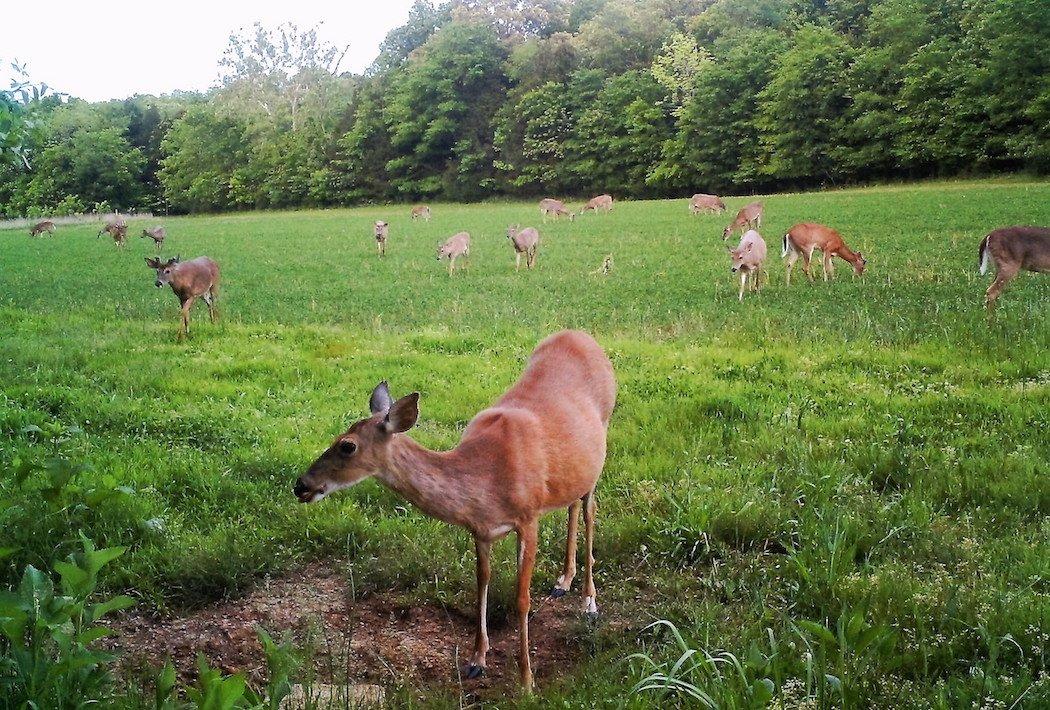Do You Operate Under This Mentality?
It might seem counterproductive. After all, everyone knows that bucks are attracted to does during the rut, but taking more does from your hunting area can actually increase your buck sightings. So how does it work? The secret is taking the right does and at the right time of year.
Let's start with which does to take. Mature does rule the roost in the deer world. They dominate the best food sources on any given section of land. Having a high percentage of older does in your herd will actually push bucks from the area. Lowering the number of mature does will open up food sources that they previously protected from bucks, allowing the bucks to stay in the area for longer periods. Bucks will be more likely to use food plots, natural food like mast crops, and even bait piles in states that allow hunting over them.
Don't Miss: 7 Questions You Should Ask About Doe Management
Mature does are also more likely to push buck fawns farther from the area in the fall. Harvesting does allows more of these buck fawns to stay in your hunting area. A smaller number of does in an area also makes it more attractive to buck fawns being displaced by does from other areas, too.

If food sources are scarce, bucks won't be at peak health, making them more prone to disease, Lacefield said. Antler growth is also affected. Bucks can't produce their biggest antlers if they are undernourished.
In extreme northern climates where food sources can be extremely limited during harsh winters, a population heavy with mature does can actually cause starvation in bucks.
When is the best time to take these extra does? Early season. Taking these does out of the herd before the rut keeps them from displacing their male fawns, leaving more bucks in the area for the following years.
Don't Miss: Deer Hunters Kill 16- and 21-Year-Old Does in the Same Area
Taking does before the rut also increases buck movement during the pre- and post-peak rut times. Having a large population of does in your hunting area allows the bucks to stay locked down in the thickets.
Look at it this way, Lacefield said. If there are fewer does, the bucks will move around more searching for hot does. If there is a hot doe in every thicket, the bucks just don't have to go anywhere. These mature does respond to increased pressure from both hunters in the field and rutting bucks by hunkering down in the nastiest stuff they can find. That is where your bucks will be as well.
In the long term, Lacefield also says taking more does can increase the quality of your herd.
Most midwestern areas run about 1:2 or 1:3 on buck-to-doe ratios, Lacefield said. Since bucks typically stay with a hot doe for 24 to 36 hours, even the smaller, weaker bucks get to breed does. By lowering the doe numbers in an area, more dominant bucks do a larger share of the breeding, improving herd genetics over time.
A lower number of does in an area can also increase fawn survival, particularly in areas with harsh winters or high predator populations, Lacefield said. In a perfect world, all does will be bred the first time they cycle during the rut. This allows the fawns to be born around the same time of the year, fairly early in the fawning season. Does that don't get bred until they cycle back into estrous have fawns later in the season. These late fawns are more likely to be killed by predators and less likely to make it through a harsh winter than fawns born earlier in the season,
Because of this, actual fawn recruitment numbers in an area remain consistent, even when the total number of does in that area is lowered.
At the end of the day, you have to make an accurate assessment of the area you hunt to determine what management plan to implement. But if you have too many does, this is a great game plan to follow.
Don't Miss: 10 Lessons I've Learned While Doe Hunting
Are you a deer hunter wanting to learn how to accomplish your goals? Check out our stories, videos and hard-hitting how-to's on deer hunting.








